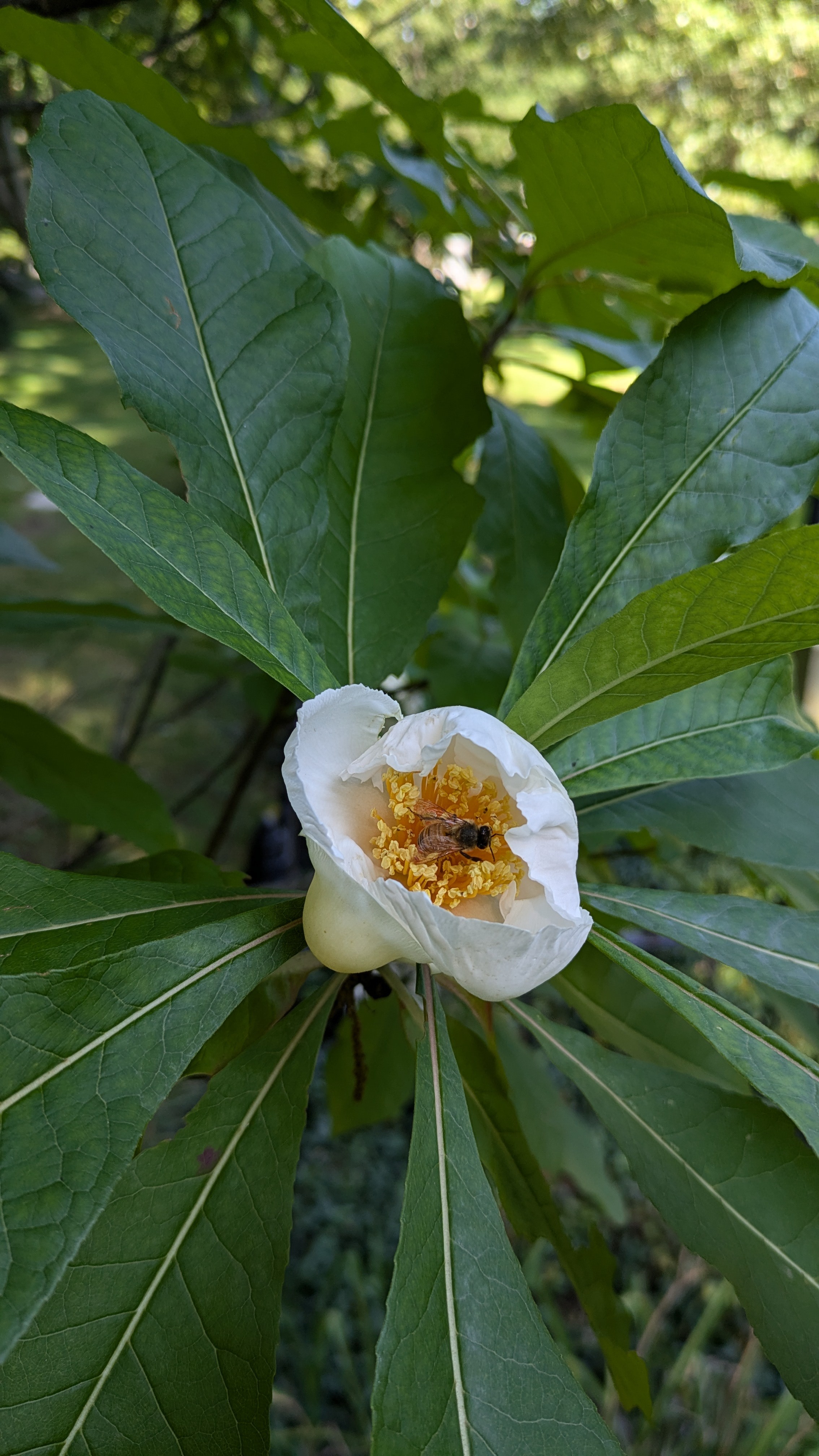Horticulture Highlight: Franklin Tree, Franklinia alatamaha
Jim Gorman August 27, 2024 Plants & Wildlife

Name a plant known to be extinct in the wild, yet currently available at numerous nurseries?
Franklin tree, Franklinia alatamaha (common name, scientific name), an outstanding native tree, was first discovered by John Bartram (1699-1777), of Philadelphia. Bartram has been referred to as the “father of American Botany,” and is famous for his plant collecting throughout eastern North America, from the shores of Lake Ontario, to northern Florida. Carl Linnaeus (1707-1778) called Bartram the “greatest natural botanist in the world.” In Bartram’s journals, from the night of October 1, 1765, he wrote, “This day we found several very curious shrubs…,” along the Altamaha River, in southeastern Georgia. This proved to be the beautiful Franklinia alatamaha, Franklin tree, ultimately named in honor of his good friend, Benjamin Franklin (1706-1790). Bartram and Franklin were co-founders of the American Philosophical Society in 1743. The Franklin tree, the only species within its genus, when found was native to a small range of coastal Georgia, yet it is cold hardy as far north as Boston.
The attractive, 3” across, white, 5-petaled, slightly-fragrant, cup-shaped, flowers, are accented by the bright orange, stamens, at their center. Beginning to flower in September, this is one of the latest blooming trees or shrubs found at Mount Auburn. If successfully fertilized, these flowers will produce a woody, 5-valved capsule, which contains its seeds. The Franklin tree has a variable habit, growing either into a large, multi-stemmed shrub, or into a small, single-trunk tree. The simple, leaves are 5-to 8-inches long, up to 3-inches across, shiny, dark green, with an entire, or remotely serrate margin. In the autumn, these leaves change to brilliant reds, and/or oranges, usually while the plant is still producing its contrasting white flowers, occasionally until the first killing frost or first snowfall.
The Franklin tree’s fascinating history is particularly enhanced, by the fact that it is now known only in cultivation. Seeds originally collected in 1777 by William Bartram (1739-1823), John’s son, who often accompanied his father, and conducted his own plant expeditions, were grown at the family’s Philadelphia homestead/nursery. All of the Franklin trees that we know today are believed to be descendants from these earlier cultivated specimens. There are no known wild Franklin trees, and repeated searches of the area of McIntosh County, Georgia, where it was first seen, have led this beautiful plant to be listed as extinct in the wild. Hence, we can thank the Bartrams, for saving this plant from extinction, to continue to enhance our landscapes.
On your next visit to Mount Auburn, look for our only Franklin tree, on Fir Avenue.
Selected Benjamin Franklin quotes, from Poor Richard’s Almanack, and other sources…
Well done is better than well said.
He who’s content has enough. He who complains has too much.
The only thing more expensive than education is ignorance.
I never knew a good war or a bad peace.
Half a truth is often a great lie.
Let thy discontents be secrets.









Comments
Comments for this post are closed